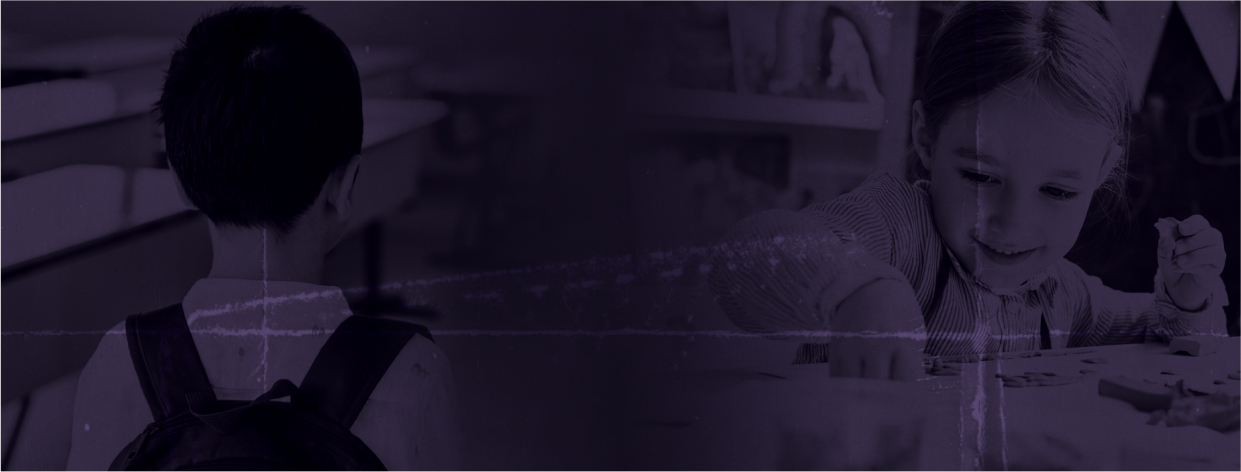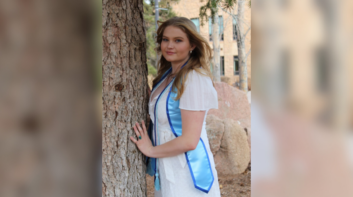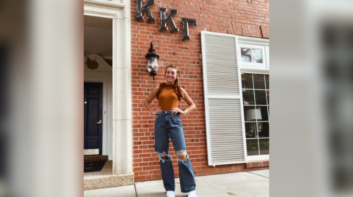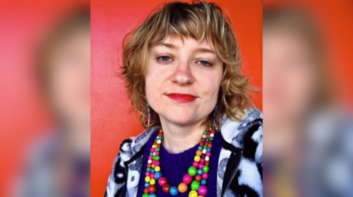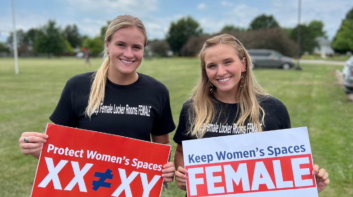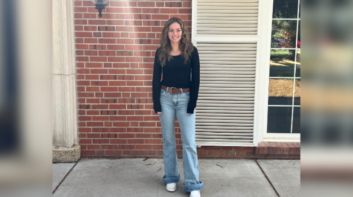In the early 2000s, Tera Myers and her husband moved from Florida back to Ohio, where they would go on to raise their three children Samuel, Lynsey, and Maggie. Originally, they chose to settle down in Mansfield because they felt confident that its larger, urban school district would provide their children—especially Samuel, who has multiple disabilities from being born with Down Syndrome—with diversified educational options. But the family quickly saw that the school Samuel would be sent to didn’t provide enough inclusion or rigor to help him succeed.
“I was specifically told [by his former public school], and I quote, ‘we have all the way until Samuel graduates to teach him how to read, there’s no sense in trying to rush it,’” Myers said, recalling how her then-seven-year-old son was posed to likely only receive a certificate of attendance at the end of his next 13 years of schooling. To make matters worse, Samuel was also surrounded by students who physically bullied him for his disabilities. She continued:
“He ended up with black and blue bruises up and down his back. I only found out because someone who was volunteering at the school called me […] Fortunately, because I made myself accessible, people notified me, but otherwise, I would’ve never known what was going on in the school. Sam wasn’t able to articulate these things to me, but he was able to act them out and show me what was going on. He was miserable.”
Additionally, six-year-old Lynsey had already begun to face issues at the neighborhood public school. Myers realized that, despite her positive outlook on public education, she needed to explore other programs.
“Lynsey was having children on the playground tell her that if she became sexually active and had a little baby, that she could make lots of money through a check every month,” Myers told Independent Women’s Forum. “I just about lost my lunch then. I couldn’t get her out of the backseat of the minivan one day because she was so scared when she saw that group of boys.”
Myers started researching Ohio’s Educational Choice Scholarship Program (EdChoice), which provides financial empowerment for parents to pull their children out of public school through vouchers. When she brought up her various complaints to her superintendent, the only advice she received was to simply take her children elsewhere.
“I went home, I cried a lot, I banged my fist on the counters and told my husband that I had never intended on homeschooling my children. I thought that I was incapable of doing that because I didn’t have a teaching degree,” Myers said, explaining that what followed was such an “unbelievable experience” academically and for the relationships built between her and her children.

At first, Myers educated her children at home using a virtual charter school, but this task became her full-time job. She would spend 16 hours a day teaching three different grade levels, but as time went on, Myers discovered that each child was better suited to unique schooling structures. Lynsey was lucky enough to receive a scholarship to a local private school, and Myers’ own advocacy eventually helped enact Ohio’s Jon Peterson Special Needs Scholarship, which positively affected Samuel’s educational outcomes.
This whole time, however, Ohio’s school choice legislation was slowly expanding in accessibility for parents across the state. When Myers first accessed the program, EdChoice only applied to failing school districts, but later expanded voucher eligibility to families who were within 250% of the federal poverty level. Alongside other scholarship opportunities that could ease financial burdens, diverse schooling options could be possible.
Still, families like Myers still weren’t yet benefitting from a fully universal program. Myers, now empowered by the EdChoice scholarship and the Jon Peterson Special Needs Scholarship, helped craft a unique program for Samuel at Lynsey’s private school. She and her daughters now credit this development to being what helped Samuel “become his greatest person.”
Myers recalled just how stark the difference was for Samuel to then have access to school choice, telling IWF how he was finally able to immerse himself in a productive school environment. Samuel took art classes, made signs for the soccer team, cheered on classmates at volleyball games, had multiple dates at school dances, and felt comfortable taking advantage of “everything that he could” because the student body embraced him. Myers said that Samuel wasn’t just a “novelty piece,” he was fully included.
“School choice doesn’t just apply [to] parents of children with special educational needs. It applied to my daughters who needed to take college courses while they were in high school,” Myers said, explaining how both her daughters matriculated into their private school two years ahead of their peers as a result of their success at the virtual charter school, but that one didn’t want to miss out on her high school sports and extracurriculars. “Parents need to be the driver of the proverbial bus and determine who gets on at each stop and who gets off.”

The freedom to choose her children’s unique educational paths inspired Myers to become a school choice advocate and even recently led to her testifying at the Ohio State House to support the Backpack Scholarship Program. Though she felt it would be a “big ask,” Myers shared her gratitude that state legislators moved the needle forward in their recent session to provide eligibility for families up to 450% of the poverty level.
Myers acknowledged that, while some parents are perfectly happy with the public school options available to them, she believes that her state beginning to open up eligibility will “broaden the horizons” for Ohio families. This includes those who might be struggling for any number of reasons, whether that’s due to their financial needs, their geographic location, or the proper conditions for their children to achieve academically.
“For so long, I felt like I was on an island and there was a rowboat sitting there, but I had no oars to get to the other side. Everybody else was over there on the other side having a great time; their kids being educated while I was sitting there spinning in circles,” she began. “By Ohio state legislature passing educational opportunities, I now have two oars to row myself to the other side. That’s what parents are looking for—oars to get to the other side. They’re not looking for you to carry them, they’re not looking for you to do it for them. They’re just looking for the hand to get up there.”
Ohio is now the eighth state to pass a universal school choice policy. Earlier this year, Arkansas, Florida, Iowa, Oklahoma, and Utah signed their own bills into law, offering educational freedom to all students in each respective state rather than just students with special needs or who are low income. The success of programs like West Virginia’s Hope Scholarship program, the first in the nation for near-universal education choice policy, or Arizona’s expansion of the Empowerment Scholarship Account program has led other states to create and continually build on their own policies.
Myers shared that she and other parents continue to push the education needle in her state and across the nation by sharing their positive, personal experiences because they recognize that educating families on the benefits of options beyond traditional public school can be a hurdle. In her own case, her children graduated in 2014, 2015, and 2017 from high school. Both daughters went on to college and are now medical professionals. Meanwhile, 28-year-old Samuel divides his work between a local pizza shop, their YMCA, and a company performing janitorial services while taking certificate courses through Shepherd’s College’s special needs college program.
“Samuel will tell you at any given moment, ‘school choice changed my life,’ and he really wants other children to have the opportunity that he had,” Myers told IWF. “The greatest thing we can give is a well-educated mind, and we can’t do that if we don’t all work together.”



